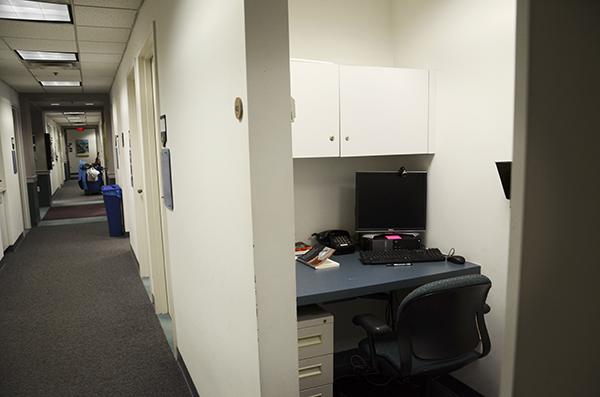The Graduate School of Education and Human Development building is long overdue for a renovation, but no concrete plans to improve the structure exist, the school’s dean said last month.
In 2006, GW’s education school was included on a list of campus buildings prioritized for renovations. More than a decade later, dean Michael Feuer said in an interview that no major updates for the school’s structures are planned because of the University’s difficult financial situation.
Feuer said University officials know of GSEHD’s modest facilities on G Street, but realities change and “the financial situation of the University is what it is.”
“We would love to have better space. We are grateful to the University for helping us make our current space better than it used to be, and if the right kind of stars align, we can make the right financial case for some significant improvements,” Feurer said. “We will see how things develop as the year goes along.”
After two years of missed budget projections, officials trimmed 5 percent in almost all divisions last year, though University President Steven Knapp said no more cuts will occur this year.
Feuer said he would rather see the school focus on outreach and continuing to improve its instructional and research programs, but the issue is still being pursued.
“We are actively talking to prospective donors and friends and philanthropists about the possibility of the kind of gift that would be necessary to make a new building take place,” Feuer said.
In a 2006 Faculty Senate meeting, the GSEHD building was named a “priority second to a Science Center among future academic construction projects on the University side of the Institution.”
The “science center” that the report references is now the $275 million Science and Engineering Hall, which opened last year. And when officials had to change up the funding scheme for the building because of lackluster fundraising, faculty questioned what other areas of GW would miss out as a result.
In the 2006 Faculty Senate report, GSEHD was cited as needing new facilities because “all faculty and students” were impacted by the lack of space or equipment to support research. No common meeting space existed, according to the report.
Senior Associate Dean Carol Kochhar-Bryant said in an email that the building does need renovation and that every year GSEHD officials raise awareness about the state of the building.
“The current building is too small now [that] the school and faculty and staff are distributed among many buildings, making coordination and collaboration to perform the academic work of the school an increasing challenge,” Kochhar-Bryant said in an email.
Kochhar-Bryant said that about 20 years ago, the old building was gutted and completely renovated, but there have been several interior renovations and technology upgrades since then. She said the problem is not a lack of renovations of the existing building, but a need for more overall space for the school.
Sylven Beck, an associate professor of curriculum and pedagogy, agreed that the problem is the amount of space in the building itself.
“Whatever the dean wants to do to make the building look better is terrific, but we still need a new building,” Beck said.
Beck said she was never a part of the building negotiations, but the school has been waiting more than 10 years for a new building.
“We are just so frustrated,” Beck said. “We envy science and engineering, we envy business, we envy international affairs, but I am not sure we are the ones holding our project up.”
James Murdock, a controller who handles the financial planning and operations for the Society for College and University Planning, said updating facilities and modern technology is vital for a school to remain competitive. Murdock helped plan the new facilities at the Ross School of Business at the University of Michigan.
“Whether or not it is arts and sciences, an education school or a business school, students like to have facilities that are quality,” he said. “It makes them feel like their organization is a high-quality organization and is competitive with the best universities in the country.”
Murdock added that updated technology and well-designed rooms are even more important than remaining competitive to potential students.
“There has been so much change over the last 10 years regarding technology in the classroom,” Murdock said. “If you don’t have classrooms that are well-designed, you simply hurt the ability of the faculty to make good classroom presentations.”
Sharon Lynch, a professor of science curriculum and pedagogy, said the school is doing what they can with what they have, but “the space is really a tight one.”
“The technology that the faculty should be using all the time, the classroom teaching technology you see in K‒12 schools, is not always available,” Lynch said.
Jacqueline Thomsen contributed reporting








